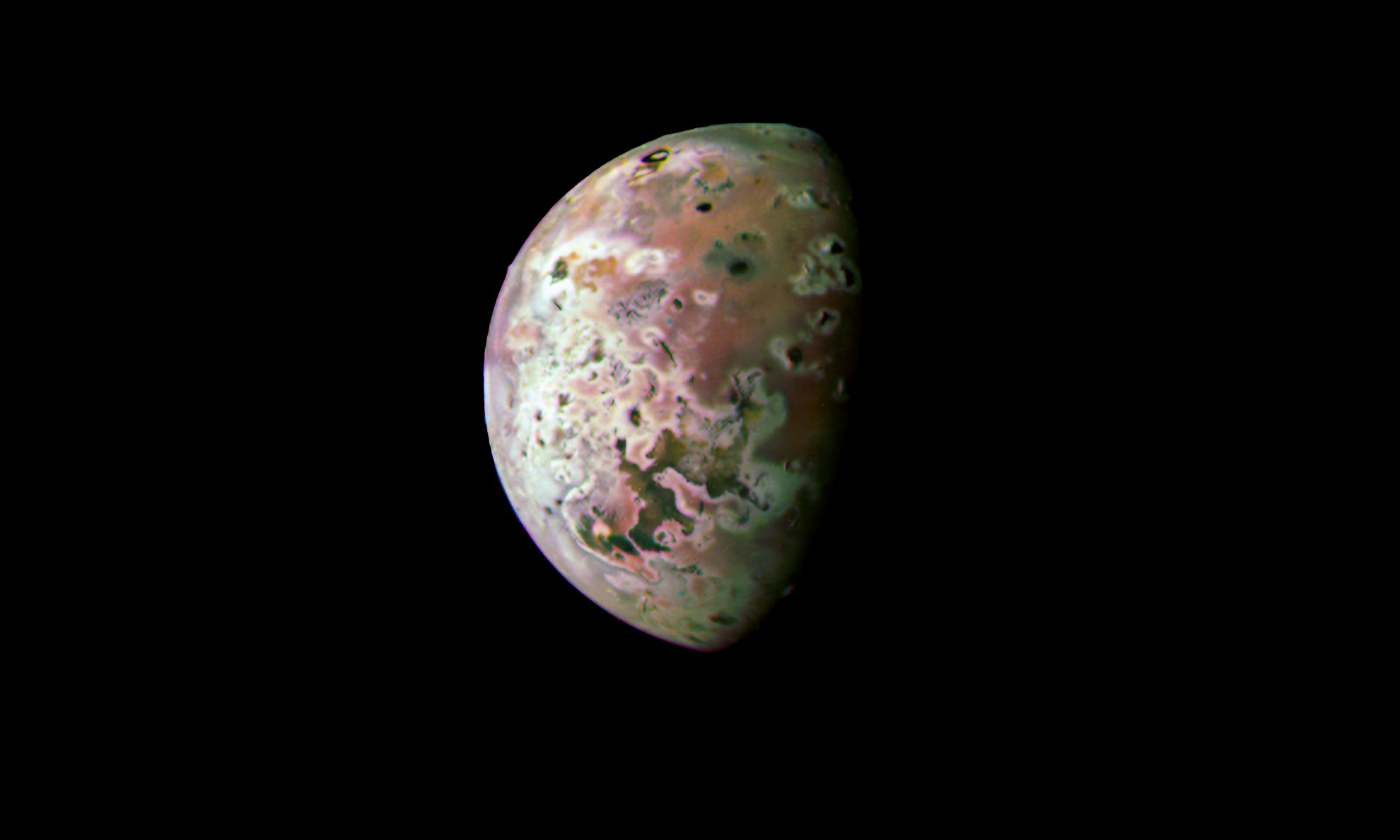The Galilean Moons, named in honor of Galileo Galileo, who first observed them in 1610, are a fascinating collection of satellites. For decades, scientists have been immensely fascinated by the three icy companions – Europa, Ganymede, and Callisto – which have oceans in their interiors that possibly support life. But Io has also been a focal point of interest lately, owing to the volcanic activity on its surface and lava plumes reaching 300 to 500 km (186 to 310 mi) into space. Since 2016, NASA’s Juno probe has provided stunning images of Io as it continues to orbit its main science objective, Jupiter.
The latest was acquired by the Juno probe’s main camera (JunoCam) on July 31st, 2023, at 05:03 AM UTC (01:03 AM EDT; July 30th, 10:03 PM PDT) and showed Prometheus spewing out lava. This active volcano is located within a 28-km (17-mi) -wide volcanic pit named Prometheus Patera on the hemisphere facing away from Jupiter. Prometheus is known for its regular eruptions, hence its nickname in the astrogeological community, “Old Faithful of Io.” A processed image of the eruption was shared by the NASA Planetary Science Division via Twitter (see below).
The image was taken during Juno‘s fifty-third orbit of Jupiter (perijove 53), where the probe once again circled the gas giant from pole to pole. During this latest pass, the Junocam science team took many images to look for lightning storms in Jupiter’s atmosphere, cyclones in the polar region, and filamentary clouds and jets. The probe also made its closest pass to Io during perijove 53, coming within 22,000 km (13,700 mi) of the moon’s surface. During the past few flybys, the probe has been getting progressively closer to the volcanic satellite.
During its previous flyby of Io on May 16th, the Juno probe passed within 35,600 km (22,100 mi) of the surface. On this occasion, JunoCam captured images of the Volund region near the equator, famous for its two active volcanoes (Volund A and Volund B), that showed evidence of eruptions. This was indicated by what appeared to be “smudges” on the landscape, which scientists consider a “smoking gun” for outgassing associated with volcanic plumes.
The mission controllers decided to take advantage of this latest and closest flyby to examine Io’s surface and gather more data on its many volcanic regions. In addition to the pictures taken by the JunoCam, extensive information was collected by the Jovian InfraRed Auroral Mapper (JIRAM), provided by the Italian Space Agency (ASI), and other science instruments. This latest batch of data is expected to provide additional insight into the hundreds of volcanoes regularly pouring molten lava and sulfurous gases all over the moon’s surface and its tenuous atmosphere.
While Io’s volcanoes have been imaged repeatedly over the past three decades by three NASA spacecraft (Galileo, New Horizons, and Juno), scientists are still excited to see new pictures of eruptions on the moon. While the Juno probe’s primary mission was originally planned to last four years (until 2020), the mission has since been extended twice- first to July 30th, 2021, and again until September 2025. Juno is expected to make two more close passes to Io, coinciding with Perijove 57 and 58. Hopefully, we will see more images of Io’s wild, erupting surface (optical and thermal, please!)
The raw images are available on the JunoCam website and other versions of the data product, all of which are available for download and processing. The JunoCam is overseen by researchers at the Southwest Research Institute (SwRI) in San Antonio, Texas.
Further Reading: NASA

